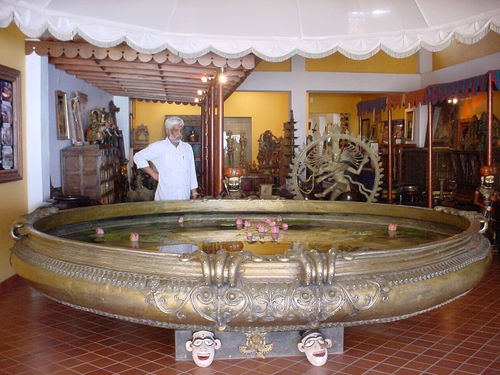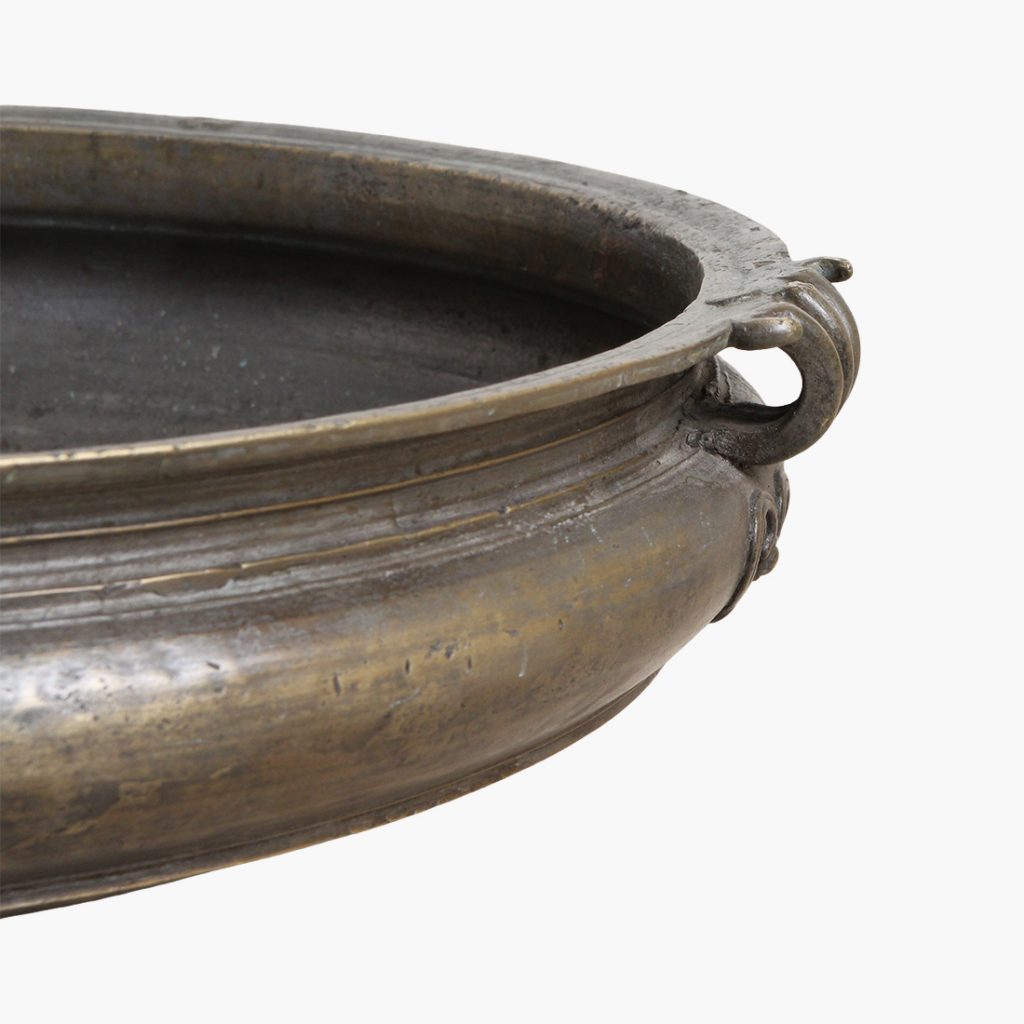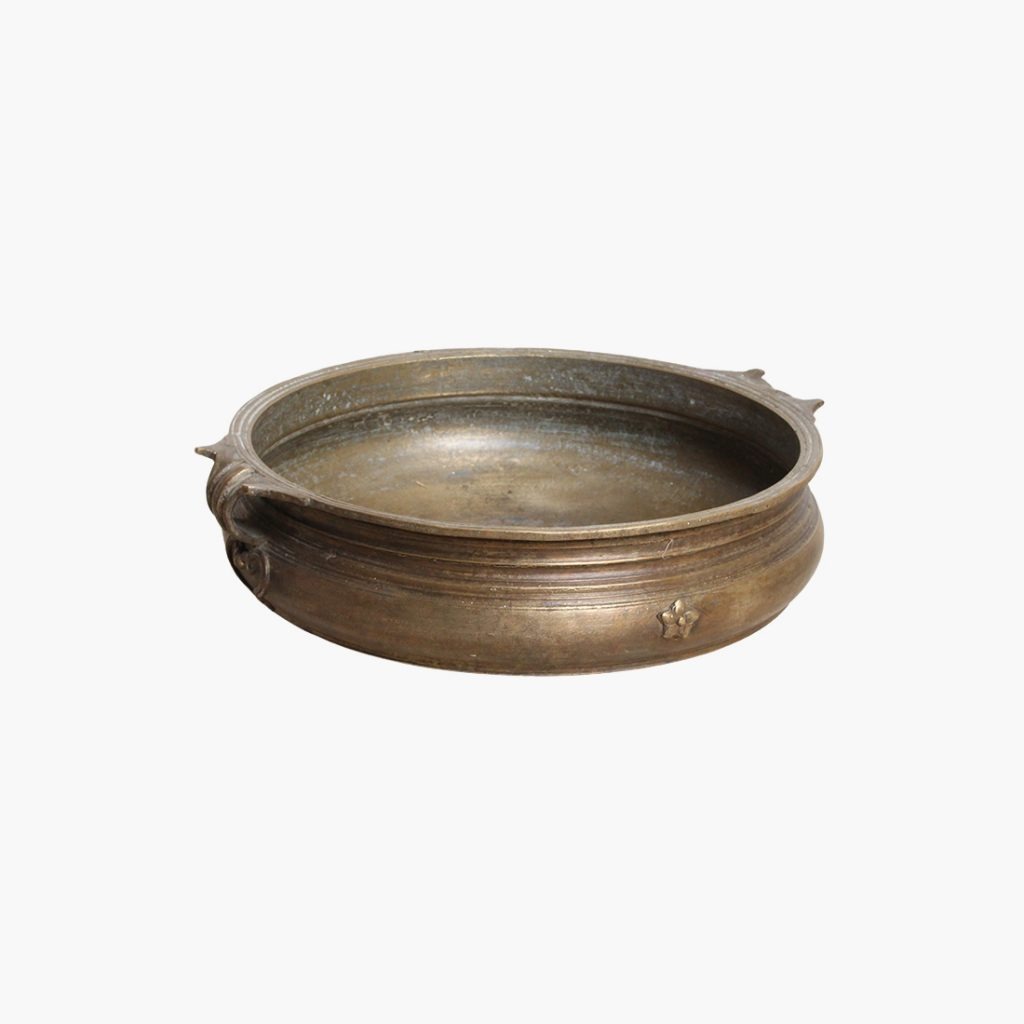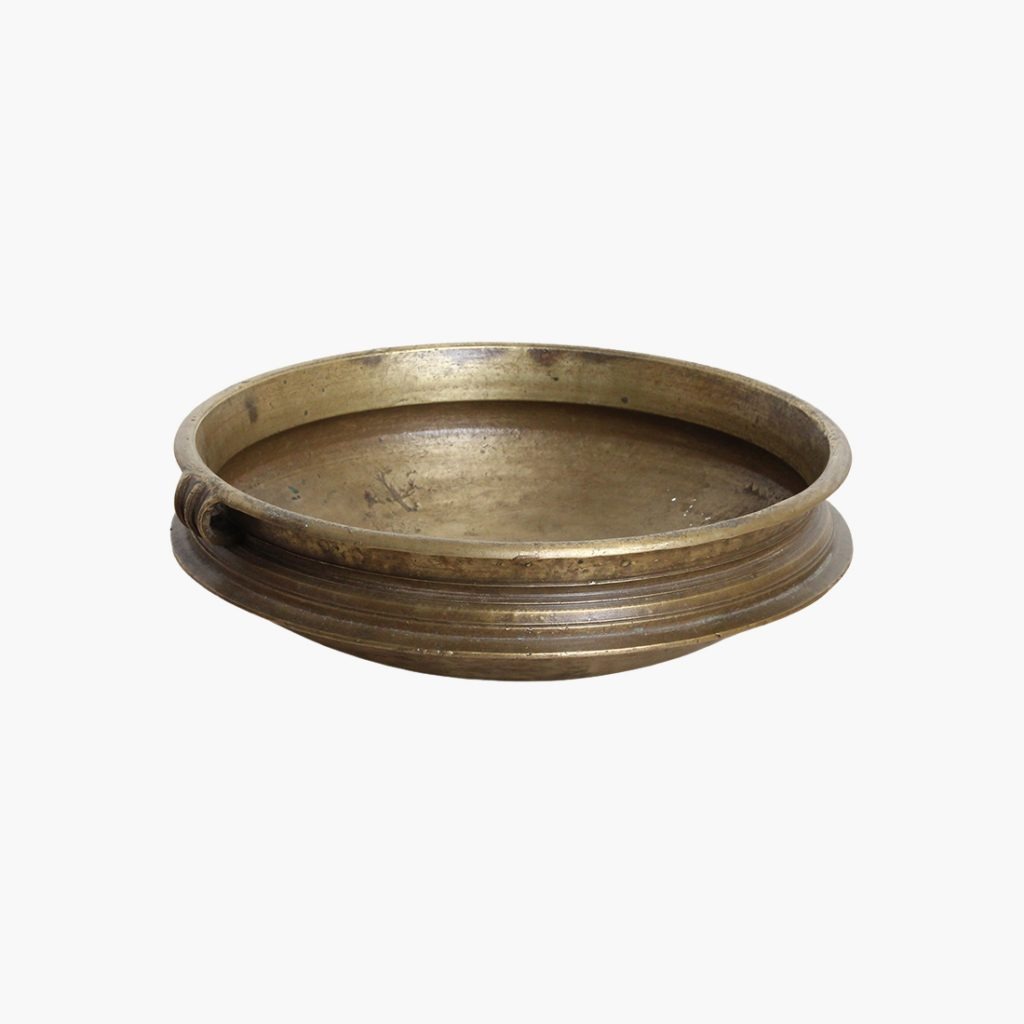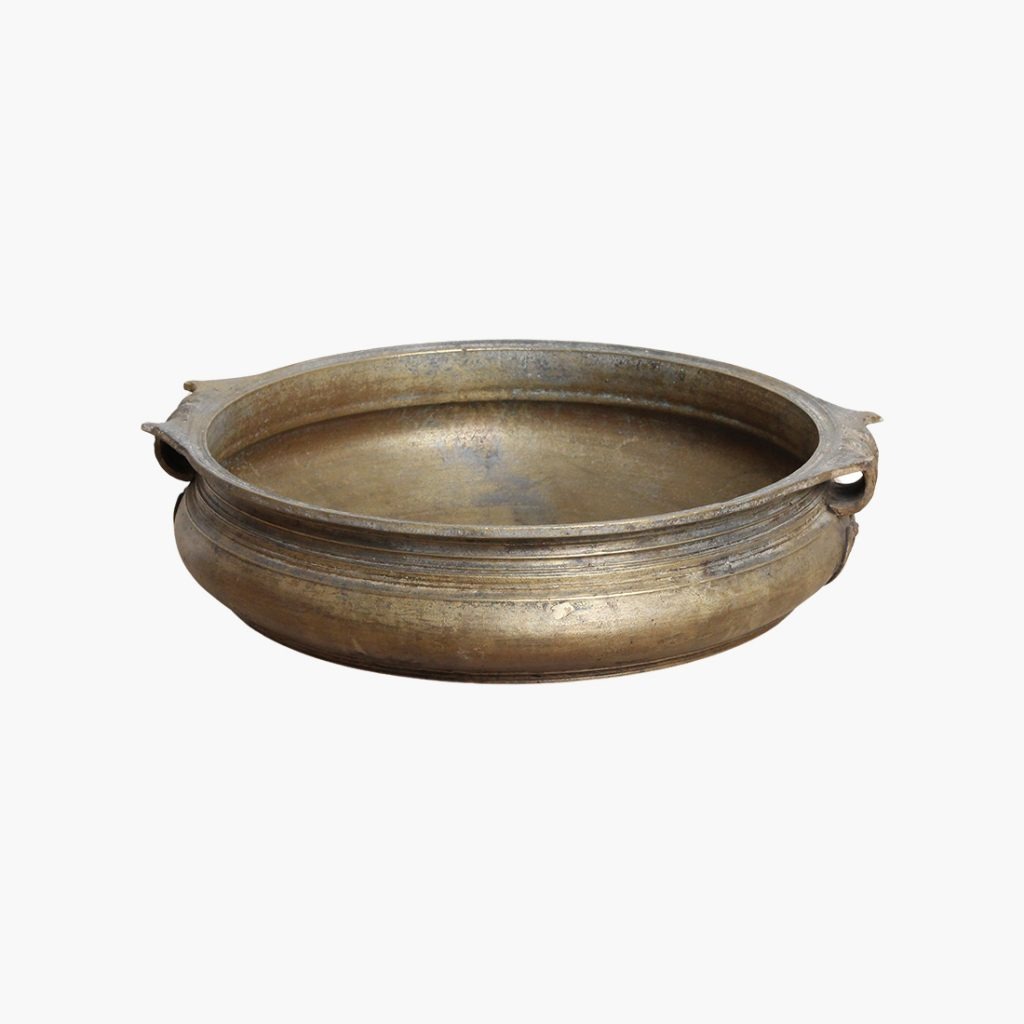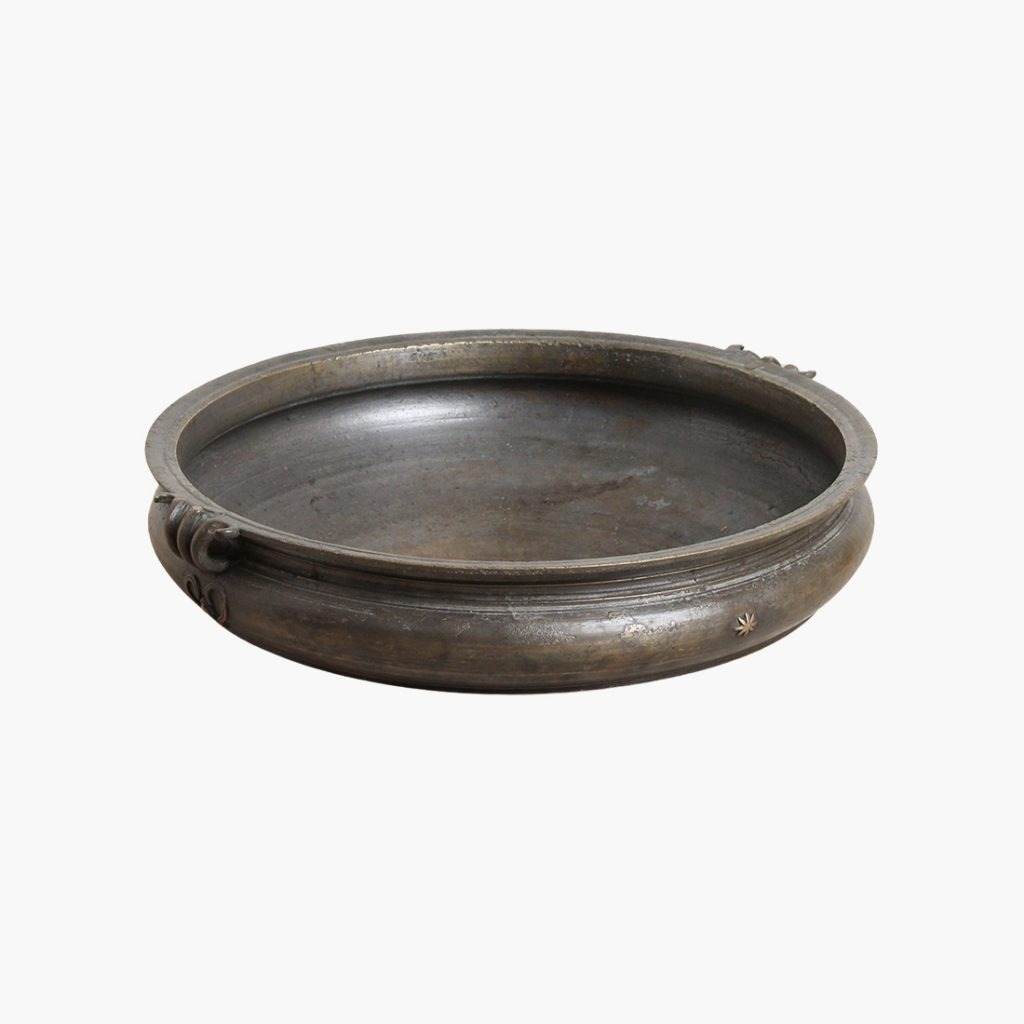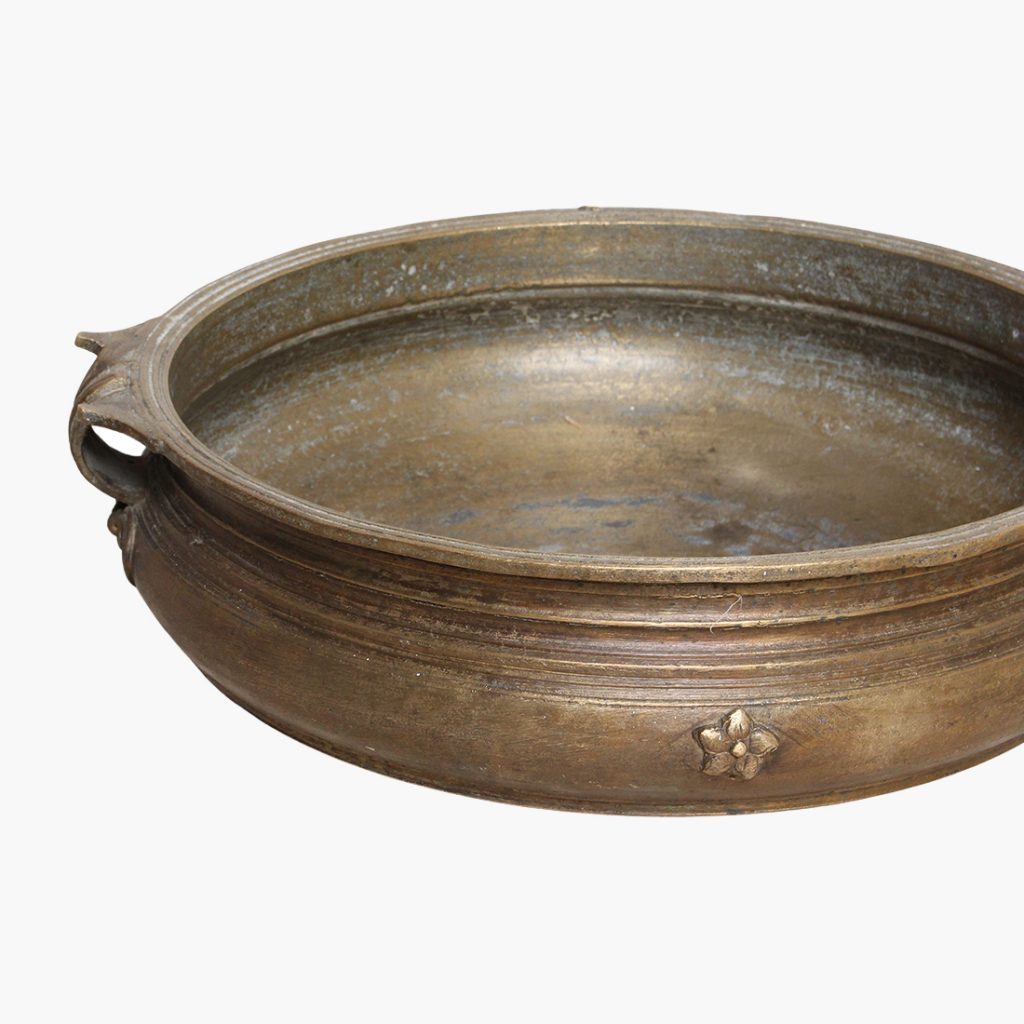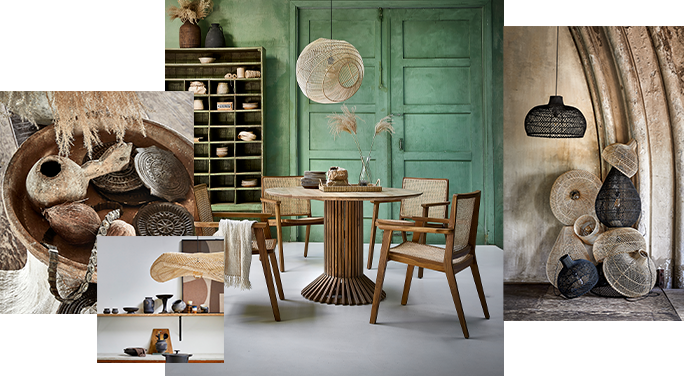Our buyers travel the world to find furniture and accessories to enhance your home. With each journey, they bring back items with an interesting background story.
In this month’s ‘Story Of..’, we want to tell you more about our authentic urulis (urli, charakku or varpu). Read more below.
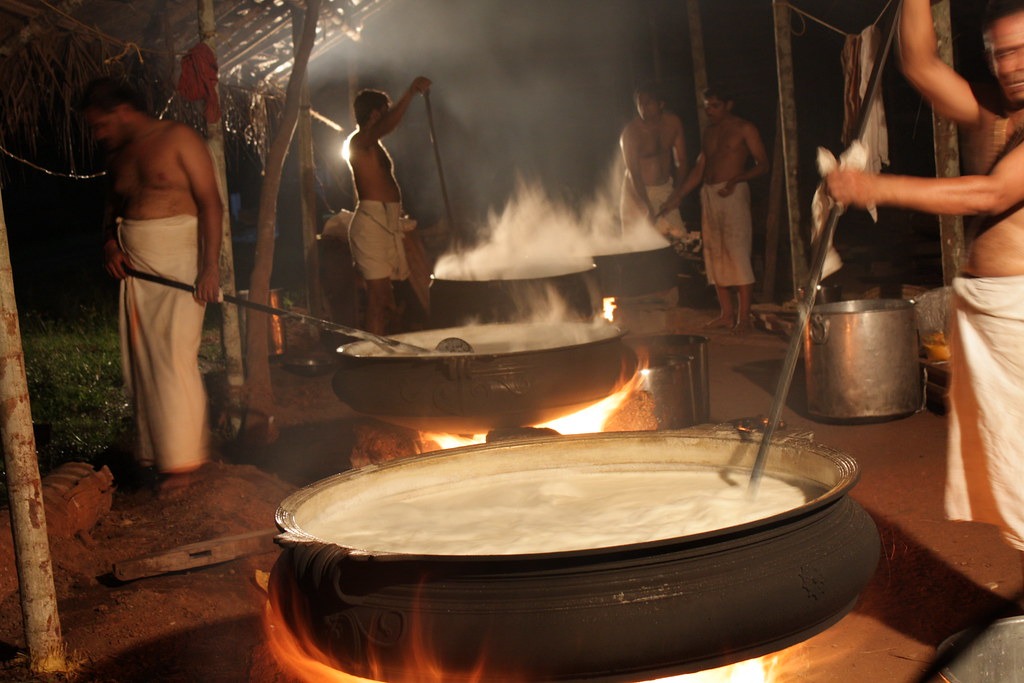
South India cooking vessels
An uruli, is made of bell-metal and is one of the largest cooking vessels. The surface of the vessel is made up of old gold tint which maintains its original colour and luster. Urulis do not require any kind of polishing or tinning. These vessels are used on ceremonial occasions to prepare payasam (a sweet dish made out of coconut milk) in large quantities. Also used in temples for cooking dhal and rice over open fires for temple festivals and for pilgrims. They were lifted into the hot coals of the fire with ropes that went through the side handles. The urulis traveled with the tribe from place to place.
Cauldron Casting of Kerala
The Moosari community of traditional metal casters of the Kammalan caste in Kerala have perfected the complex technique of casting large cauldrons in one single piece, using the lost-wax process (cire perdue). The charakku and the uruli are the two important vessels made by the Musaris. The preferred metal for casting is bronze.

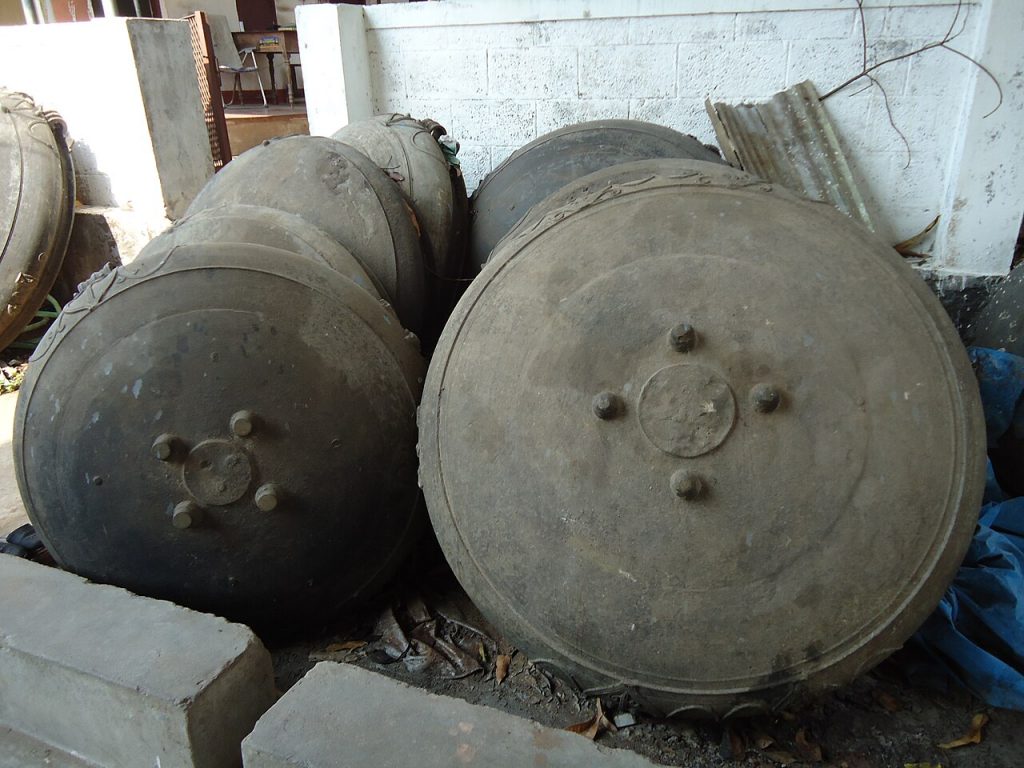
The process
So arduous is the process of preparing the clay mould, the wax replica, and the final casting, that elaborate ritual prescriptions are observed by the Musaris for a faultless casting.
Using the cire perdue or lost wax method of casting, elaborate rituals, and the propitiation
Of the gods traditionally accompany the casting. The process starts with the invocation to lord Ganapati (Ganesh) and ritual blessings.
The core is made using a variety of clays, each of which is selected for its plasticity, bonding properties, strength, or surface finish. The process of making the clay mould is a very detailed and laborious job. A mixture of pure beeswax, tree resin, and castor oil, prepared according to traditional means, is pinched onto the core in rolls or beaten into sheets and applied. Gauges for resin thickness are affixed to ensure an even rim and a constancy of the body. A heater tool is used to remove the access wax while the core is turned and surface motifs made of wax rolls that are carved out of wax plates are attached. Wax runners made broad at the top and narrow at the joint and distributed so as to ensure a convenient and balanced inflow of metal are placed at intervals.
The outcome of the solid metal mould depends on the precise and careful handling of both the mould and molten metal special prayers and rituals are conducted throughout the process to ensure a perfect result.
Usability
The uruli can be found in many traditional South Indian homes. There are several sizes for different functions:
- Small ones are used in family homes and have a more decorative function.
- Very large ones “varpul” are used for cooking on occasions that require a big amount of food.
With its shallow circular shape, the uruli is also used to display flower decor in traditional homes for the New Year. Flower petals and candles float in them to honor deities or welcome guests to a home.
These days many resorts and hotels use them at the entrance, filled with water, and inside flowers or lights floating for a natural peaceful feeling. It would also make a lovely garden feature as a planter or water feature as a small pond.

Age
All our Urulis are selected pieces, they are in a beautiful and original condition. The bronze urulis display a great used and aged patina. Approximately is the age of our urulis 100 to 150 years old.
Design
A stark simplicity: its smooth spatial contours lend a resolute solemnity to its size and utility as a ritual cooking vessel. The basin has a flattened bottom, and curved sides leading to a broad lip. The handles are decorative with scrolling motifs but are also thick and robust. Bamboo rods or ropes were inserted in the basins, so their contents could be carried. Each uruli is unique in size, function, patina & design. Often there are names, markings, or designs visible on the sides. The quality is unrivalled and you will appreciate them for life.
